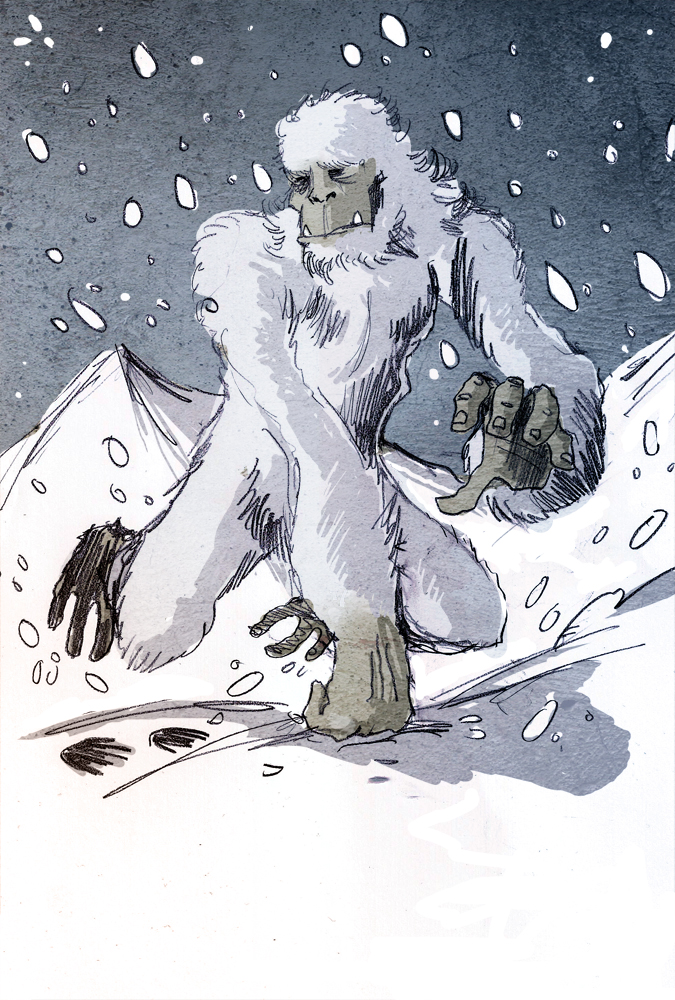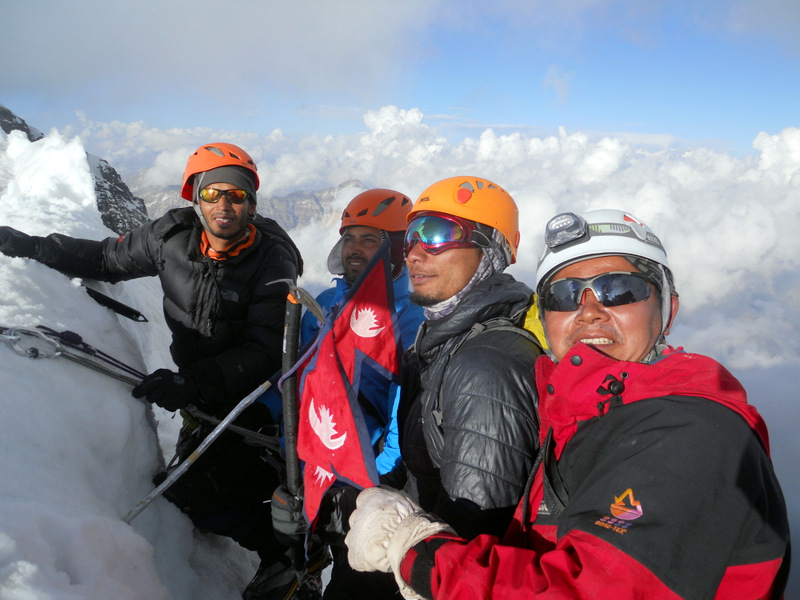|
Murkatta
Murkatta () is a headless ghost with eyes and mouth in chest and carrying its head tucked under its arm. Murkatta is mentioned in various Nepali culture and traditions. They are considered as the spirits from the dead. The Murkatta is also interpreted as a person whose head has been cut down, symbolizing the defeat or a loss of intellect. In contemporary culture and religion The concept of Murkatta has inspired various works in contemporary culture, arts and literature. Some are listed below. * In Kathmandu, Nepal, a festival is celebrated on the day of Ghode Jatra to scare away the ''Murkatta'' and prevent its evil eyes from the children. * In Varanasi, India, a fifth century headless sculpture of the Buddha is worshipped as ''Murkatta Baba''. * The Sisne mountain(Nepali:सिस्ने हिमाल) in Rukum district is nicknamed as ''Murkatta'' in local language. * ''Murkatta Lass'' is a Nepali book by Dirgabahu. See also *Nepalese folklore Nepalese folklor ... [...More Info...] [...Related Items...] OR: [Wikipedia] [Google] [Baidu] |
Nepalese Folklore
Nepalese folklore is a diverse set of mythology and traditional beliefs held by the Nepali people. Folk beliefs * Banjhakri and Banjhakrini, supernatural shamans of the forest. * ''Bir'', a demon *'' Boksi'', a witch * Budhahang, legendary Kirati king who could stop movement of sun * ''Chhauda'', a child ghost * Kichkandi, type a female ghost. * Lakhey and Majipa Lakhey, types of demon. * ''Masan'', a demon *'' Murkatta'', a headless ghost with eyes and mouth in chest * Yeti, an ape-like creature purported to inhabit the mountains of Nepal. See also * Culture of Nepal The culture of Nepal encompasses the various cultures belonging to the 125 distinct ethnic groups present in Nepal. The culture of Nepal is expressed through music and dance; art and craft; folklore; languages and literature; philosophy and re ... References {{Nepal-stub Nepalese folklore Nepalese culture ... [...More Info...] [...Related Items...] OR: [Wikipedia] [Google] [Baidu] |
Kathmandu
, pushpin_map = Nepal Bagmati Province#Nepal#Asia , coordinates = , subdivision_type = Country , subdivision_name = , subdivision_type1 = Province , subdivision_name1 = Bagmati Province , subdivision_type2 = District , subdivision_name2 = Kathmandu , established_title = , founder = Manjushri , parts_type = No. of Wards , parts = 32 , seat_type = , seat = , government_footnotes = , government_type = Mayor–council government , governing_body = Kathmandu Metropolitan Government, , leader_title = Mayor , leader_name = Balendra Shah ( Ind.) , leader_title1 = Deputy mayor , leader_name1 = Sunita Dangol (UML) , leader_title2 = Executive Officer , leader_name2 = Basanta Adhikari , unit_pref ... [...More Info...] [...Related Items...] OR: [Wikipedia] [Google] [Baidu] |
Ghode Jatra
Ghode Jatra(Nepali:घोडे जात्रा) is a horse festival native to Kathmandu. The festival occurs annually on mid March or early April. In the festival, a horse parades is organized in Tundikhel. The parade and competitions is carried out in the presence of heads of state. Nepal Army organizes the parade and competitions. Newar people mark the festival with a feast. There is a public holiday in Kathmandu on the day of Ghode Jatra. Origin In the inner city of Kathmandu, whenever children disappeared, it was assumed that demons or cannibals did it. In order to scare off the bad spirits, campers in Tudikhel who had horses with them, were asked to run those horses around Tudikhel to scare off the demons. People gathered and fed the demons near the tree that is still located in the middle of Tudikhel. The ritual later took a form of festival. The tradition later changed into a national festival. See also *List of festivals in Nepal List of festivals celebrated in Nepa ... [...More Info...] [...Related Items...] OR: [Wikipedia] [Google] [Baidu] |
Varanasi
Varanasi (; ; also Banaras or Benares (; ), and Kashi.) is a city on the Ganges river in northern India that has a central place in the traditions of pilgrimage, death, and mourning in the Hindu world. * * * * The city has a syncretic tradition of Muslim artisanship that underpins its religious tourism. * * * * * Located in the middle-Ganges valley in the southeastern part of the state of Uttar Pradesh, Varanasi lies on the left bank of the river. It is to the southeast of India's capital New Delhi and to the east of the state capital, Lucknow. It lies downstream of Allahabad (officially Prayagraj), where the confluence with the Yamuna river is another major Hindu pilgrimage site. Varanasi is one of the world's oldest continually inhabited cities. Kashi, its ancient name, was associated with a kingdom of the same name of 2,500 years ago. The Lion capital of Ashoka at nearby Sarnath has been interpreted to be a commemoration of the Buddha's first sermon there ... [...More Info...] [...Related Items...] OR: [Wikipedia] [Google] [Baidu] |
Rukum District
Rukum District ( ne, रुकुम जिल्ला) was a "hill" and "mountain" district some west of Kathmandu partially belonging to Lumbini Province and partially to Karnali Province before split into two districts Western Rukum District, Western Rukum and Eastern Rukum District, Eastern Rukum after the state's reconstruction of administrative divisions in 2017. Rukum covers an area of with population of 207,290 in 2011 Nepal census. Musikot, Rukum, Musikot (also called Jhumlikhalanga) was the district's administrative center. Rukum district has potential tourist attractions that remain largely unexplored including ''yarsagumba'' (Ophiocordyceps sinensis) collection caravan destinations, historical sites from the ten-year insurrection including the seat of a breakaway government in Banphikot, eastern Rukum, and the so-called Guerrilla Trek passes through this area that was a hotbed for recruiting and training as well as a battleground during Nepal's civil war (1996-2006 ... [...More Info...] [...Related Items...] OR: [Wikipedia] [Google] [Baidu] |
Nepalese Culture
The culture of Nepal encompasses the various cultures belonging to the 125 distinct ethnic groups present in Nepal. The culture of Nepal is expressed through music and dance; art and craft; folklore; languages and literature; philosophy and religion; festivals and celebration; foods and drinks. Dance and music Legends state that dances in this country originated in the abode of Lord Shiva — the Himalayas, where he performed the tandava dance. This indicates that dance traditions of Nepal are very ancient and unique. With altitudes and ethnicity, the dances of Nepal slightly change in style as well as in the costumes. The Dishka, a dance performed at weddings, includes intricate footwork and arm movements. Accompanying music and musical instruments change in tune with the themes, which revolve around topics like harvesting of crops, marriage rites, war stories, a lonely girl's yearning for her love, and several other themes and stories from everyday life in the villages. The ... [...More Info...] [...Related Items...] OR: [Wikipedia] [Google] [Baidu] |




